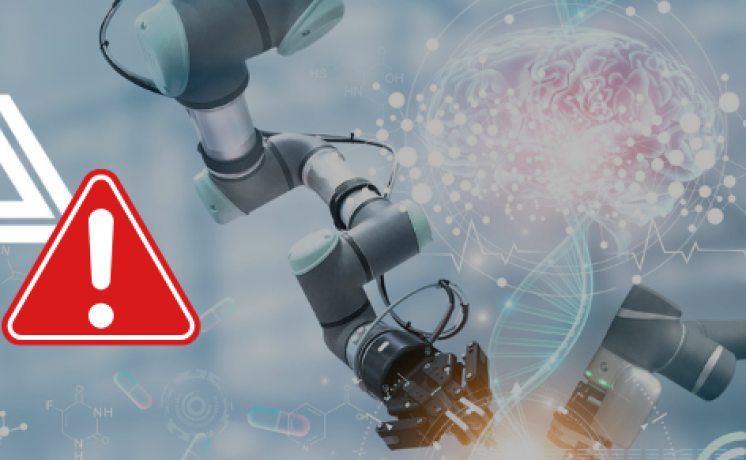Maintenance and Calibration Systems in Life Sciences: The USDM Life Sciences Perspective
Effective asset management and the ongoing maintenance of proper calibration are cornerstone practices in the life sciences sector. These functions are essential for ensuring regulatory compliance, maintaining high-quality standards, and achieving operational efficiency. The integration of cutting-edge technologies, such as artificial intelligence (AI), machine learning (ML), and the Internet of Things (IoT), has shifted these processes from reactive to predictive models. This transformation allows organizations to optimize performance while reducing risks. This article delves into the significance of asset management, the role of emerging technologies, and the transformative partnership between USDM Life Sciences and Blue Mountain.
Strategic Value of Digital Asset, Maintenance, and Calibration Systems
Regulatory Compliance
In the life sciences industry, adherence to regulatory frameworks such as those imposed by the FDA and Good Manufacturing Practices (GMP) is non-negotiable. Effective asset management and calibration maintenance are critical in meeting these stringent requirements:
- Detailed Audit Trails: Comprehensive lifecycle documentation, including installation, maintenance, and calibration validation, ensures robust traceability.
- Regulatory Readiness: Systems designed to comply with evolving global standards minimize the risks of audits and penalties.
Quality and Safety
The ongoing verification of calibration—distinct from initial calibration—ensures that equipment continues to function within established tolerances. This approach mitigates risks and sustains quality:
- Enhanced Patient Safety: Accurate calibration prevents measurement errors that could lead to compromised product safety.
- Risk Mitigation: Regular calibration checks reduce the likelihood of costly recalls and adverse events by identifying potential failures early.
Operational Efficiency
Proactive calibration management minimizes downtime and enhances production workflows. For instance, a global pharmaceutical company employing predictive maintenance systems reduced unplanned downtime by 20%, thereby increasing productivity:
- Predictive Scheduling: Anticipating calibration and maintenance needs ensures interventions are planned during non-critical periods.
- Streamlined processes and efficient resource allocation drive long-term cost savings.
The Role of Technology in Modern Asset Management
Generative AI Applications
Generative AI is revolutionizing operational models by automating complex tasks and providing actionable insights:
- Streamlined Compliance: Automated documentation and validation processes accelerate regulatory approval cycles.
- Enhanced Decision-Making: Real-time analytics identify trends and anomalies, supporting more effective resource allocation.
- Predictive Maintenance: AI-driven systems forecast calibration needs, reducing equipment downtime and operational disruptions.
- Integrated Workflows: Digital platforms powered by AI unify disparate systems, creating seamless processes across the asset lifecycle.
Machine Learning Integration
Machine learning offers unparalleled accuracy and foresight in asset management and calibration systems:
- Anomaly Detection: ML algorithms identify subtle shifts in equipment performance, enabling preemptive interventions.
- Data Automation: Automating calibration adjustments reduces human error and ensures continuous compliance.
- Dynamic Scheduling: Insights derived from ML optimize workflow timing, enhancing both efficiency and equipment lifespan.
AI Agents and Digital Workflow Automation
AI agents embedded within digital workflows provide transformative benefits:
- Task Automation: Repetitive tasks such as scheduling and reporting are handled autonomously, freeing staff for higher-value activities.
- Compliance Tracking: Integrated systems continuously monitor regulatory adherence, generating comprehensive, audit-ready documentation.
- Enhanced Collaboration: Unified platforms allow cross-functional teams to access real-time data, improving transparency and decision-making.
Future Outlook: Digital Transformation in Life Sciences
The industry is poised for profound changes as digital technologies become integral to daily operations:
- IoT-Driven Monitoring: Real-time sensors provide continuous insights into asset performance, facilitating immediate corrective actions.
- Cloud-Based Ecosystems: Centralized platforms improve data accessibility, security, and collaboration across global teams.
- Advanced Analytics: Predictive tools leverage vast datasets to optimize equipment performance and anticipate maintenance needs.
- Process Enhancements: Automation ensures consistency in documentation and traceability, improving regulatory compliance.
USDM Life Sciences and Blue Mountain: A Strategic Partnership
USDM Life Sciences and Blue Mountain combine their expertise to deliver innovative solutions tailored to the life sciences sector. Blue Mountain’s integrated platform consolidates computerized asset, maintenance, and calibration systems, driving value across key areas:
Domain Expertise
- Life Sciences Insight: Decades of experience ensure solutions address industry-specific challenges.
- Validated Software: Platforms designed to align with regulatory frameworks reduce implementation timelines and compliance burdens.
Service Enhancements
- End-to-End Solutions: Combining managed services with advanced technology ensures seamless operation.
- Ongoing Support: Expert consultation addresses both operational and regulatory complexities.
Implementation Benefits
- Operational Agility: Faster deployment and optimized workflows reduce time-to-market.
- Regulatory Confidence: Built-in compliance tools mitigate risks during audits and inspections.
Business Impact and Long-Term Value
Comprehensive Solutions
- Tailored solutions evolve alongside changing compliance landscapes.
- Custom Applications: Flexibility addresses the unique needs of pharmaceutical manufacturers, CDMOs, and med-tech companies.
Market Expansion
- Global Reach: The partnership extends resources and capabilities to international markets.
- Expert Insights: Deep regulatory knowledge ensures consistent adherence across jurisdictions.
Sustainable Value
- Cost Efficiency: Predictive systems optimize resource allocation and reduce operational costs.
- Environmental Responsibility: Improved asset utilization contributes to sustainability goals.
Conclusion
The life sciences industry is entering a new era of efficiency and innovation, driven by the integration of advanced technologies in asset, maintenance, and calibration systems. The partnership between USDM Life Sciences and Blue Mountain exemplifies this transformation, offering unparalleled solutions that set new industry benchmarks.
To explore how USDM Life Sciences and Blue Mountain can elevate your organization’s operations, reach out to our team for tailored, forward-thinking solutions.




